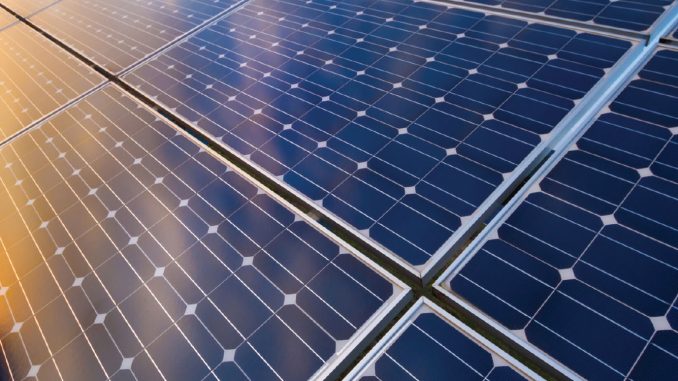 India has announced a tall non-fossil fuel energy target of 500 GW by 2030, up from 450 GW. While the Indian solar and wind markets have already matured, the focus has now shifted to green hydrogen to help achieve this target. The Make in India strategy is also being pushed, especially in solar manufacturing, to make setting up solar projects more viable and decrease the reliance on imports. Recognising the potential in this area, Reliance Industries Limited has entered the space with large-scale plans for implementation. In 2020, Reliance announced its commitment to become a net zero company by 2035. To this end, it plans to invest over Rs 750 billion in low-carbon initiatives over the next three years.
India has announced a tall non-fossil fuel energy target of 500 GW by 2030, up from 450 GW. While the Indian solar and wind markets have already matured, the focus has now shifted to green hydrogen to help achieve this target. The Make in India strategy is also being pushed, especially in solar manufacturing, to make setting up solar projects more viable and decrease the reliance on imports. Recognising the potential in this area, Reliance Industries Limited has entered the space with large-scale plans for implementation. In 2020, Reliance announced its commitment to become a net zero company by 2035. To this end, it plans to invest over Rs 750 billion in low-carbon initiatives over the next three years.
In the solar segment, the company can be expected to focus on the manufacturing side in the short to medium term, slowly building towards an end-to-end ecosystem. The company is targeting a solar manufacturing of 100 GW by 2030. Further, with its immense experience in the oil and gas space, the company is also planning a massive foray into the green hydrogen space. It plans to achieve a $1 per kg cost of green hydrogen in one decade, also known as the “1-1-1” target.
To bring its vision to reality, Reliance has started developing the massive Dhirubhai Ambani Green Energy Giga Complex, spread over an area of 5,000 acres in Jamnagar. It will be among the largest integrated renewable energy manufacturing facilities in the world. It will have four gigafactories, covering the entire spectrum of renewable energy. The first will be an integrated solar photovoltaic (PV) module factory, the second will be an advanced energy storage battery factory, the third will be an electrolysis factory for the production of green hydrogen, and the fourth will be a fuel cell factory for converting hydrogen into mobile and stationary power.
Reliance Industries is pursuing its renewable and clean energy initiatives mainly through its wholly owned subsidiary, Reliance New Energy Solar Limited (RNESL). It recently announced tie-ups with various players such as REC, NexWafe, Sterling & Wilson, Stiesal and Ambri through its subsidiary, for a total cost of $1.2 billion. Through ongoing and upcoming investments, Reliance intends to establish an integrated end-to-end ecosystem. Of the planned investment, Rs 150 billion will go towards the value chain, partnerships and future technologies, including upstream and downstream industries. To this end, a renewable energy project management and construction division and a renewable energy project finance division will be set up.
Recent acquisitions and collaborations
Since declaring its roadmap for low-carbon energy, Reliance has been taking various initiatives in this space. Some of the major developments include collaborations with key players in the sector. It announced a significant investment in energy storage in August 2021. RNESL, along with strategic investors Paulson & Co, Inc. and Bill Gates, as well as a few other investors, together announced an investment of $144 million in Ambri, Inc., an energy storage company based in Massachusetts, USA. RNESL will invest $50 million to acquire 42.3 million shares of preferred stock in Ambri.
In another endeavour in the clean energy space, in October 2021, Reliance partnered with Danish company Stiesdal A/S to develop and manufacture hydrogen electrolysers. The partnership agreement was signed during a state visit by Denmark to India. As part of the deal, RNESL and Stiesdal have also agreed to extend their collaboration to development and implementation of other climate change technologies including offshore wind energy, next-generation fuel cells for conversion of hydrogen to electricity for mobile and static electricity generation, long-duration energy storage, and production of carbon-negative fuels.
Further, Reliance announced that it will acquire a 40 per cent stake in Sterling & Wilson Solar Limited through a combination of primary investment, secondary purchase and an open offer for around Rs 28.5 billion. RNESL will first acquire a 15 per cent stake in Sterling & Wilson by way of a preferential allotment of 29.3 million equity shares at Rs 375 per share. Reliance will also acquire 18.4 million equity shares through RNESL from the SP group company at Rs 375 per share. Sterling & Wilson is an international engineering, procurement and construction and operations and maintenance service provider, with operations in India, Southeast Asia, the Middle East, Africa, Europe, the Americas and Australia. Thus, the acquisition is likely to help Reliance tap into international markets, especially in the Middle East, where Sterling & Wilson has a significant presence.
Also in October 2021, the company announced that it will be a strategic lead investor for NexWafe GmbH’s Euro 39 million Series C financing round, investing Euro 25 million in phase one. Reliance and NexWafe have also entered into an India Strategic Partnership Agreement providing for joint technology development and commercialisation of high efficiency “green solar wafers”. Such acquisitions and collaborations will help Reliance expand its presence in the renewable energy space, in which it is a significant but new entrant.
Focus on solar manufacturing
Solar has been on the priority list for Reliance in addition to the emerging technologies of green hydrogen and energy storage. In yet another major development in October 2021, RNESL announced its acquisition of 100 per cent shareholding in REC Solar Holdings AS (REC Group), a solar cells, panels and polysilicon manufacturing company, from China National Bluestar (Group) Co Ltd., for an enterprise value of $771 million. Reliance intends to support REC’s planned expansions, including 2-3 GW of cells and module capacity in Singapore, a brand new 2 GW cell and module unit in France, and another 1 GW module plant in the US. In India, Reliance plans to use this industry-leading technology in its fully integrated, metallic silicon-to-PV panel manufacturing giga-factory at the Dhirubhai Ambani Green Energy Giga Complex, Jamnagar, starting with 4 GW per annum capacity and eventually growing to 10 GW per annum. In December 2021, Reliance Industries raised $736 million in green loans to fund the acquisition of REC Solar Holdings. The acquisition of a major solar cell and module supplier such as REC will give Reliance ready-made solar value chain infrastructure as well as quality products, making it easier to capture greater market shares.
Beyond collaborating with foreign firms and plans to tap into international markets through them, Reliance has resolved to make a mark in local solar module manufacturing. RNRSL has been selected as a beneficiary under the production-liked incentive (PLI) scheme for solar panel manufacturing. In November 2021, the Indian Renewable Energy Development Agency announced that RNESL, along with Shirdi Sai Electricals and BC Jindal Group’s Jindal India Solar Energy, had been selected as a beneficiary of the PLI scheme. Under the scheme, RNESL will get PLI of Rs 11.9 billion. Reliance was one of the four bidders in the solar PLI scheme to have bid for 4 GW of capacity covering all four stages of manufacturing, from polysilicon to wafers to cells and modules. Reliance is now gearing up to set up a global-scale integrated PV gigafactory and make India a manufacturing hub for low-cost, high efficiency solar panels.
The way forward
Renewables offer a huge opportunity for Reliance to tap into, and with an already mature presence in various other segments, the company is well placed to expand into this space. According to industry professionals, venturing into the green energy business has fuelled the growth of Reliance Industries and may even catapult the company’s share prices to a new high. As per an industry report, the new energy business could contribute almost 10 per cent of the company’s total earnings before interest, taxes, depreciation and amortisation by financial year 2026, assuming that all the factories are constructed and ramped up on the company’s timeline.
Reliance has already established itself as a key player in the emerging green hydrogen industry in India. Given its presence in the nascent stage and its future plans for 1-1-1, the company will continue to be a significant part of India’s low-carbon energy and green hydrogen revolution. Moving forward, Reliance is also positioning itself to tap into the global markets for low-carbon and renewable technologies. Within just the latter half of 2021, the group has engaged in five significant tie-ups and acquisitions involving key international players. This trend can be expected to continue into the next year and eventually yield a promising international network for Reliance to participate in the global new energy arena.
By Meghaa Gangahar



